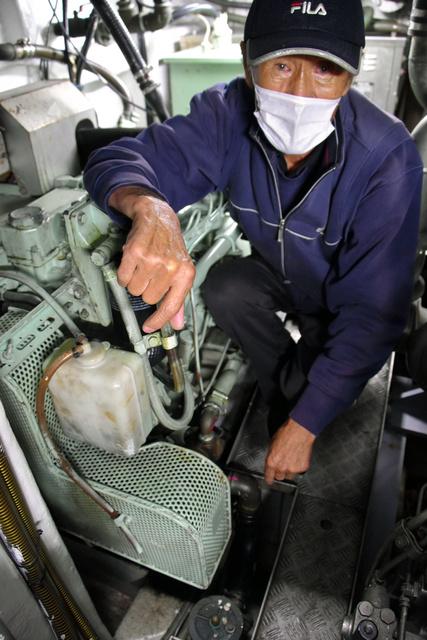Impact of pumice stone on returning bonito and tuna fishing Drifting confirmed off the coast of Kochi
A large amount of pumice formed by the eruption of the submarine volcano "Fukutoku Okanoba" in the Ogasawara Islands is drifting in the sea off the coast of Kochi. It is believed to have surged into the ports of Okinawa and Kagoshima, and then moved north along the Kuroshio current on the Pacific side. Even in Kochi Prefecture, the effects are beginning to appear, with fishing boats speeding up operations and changing fishing grounds.
"I thought it would be dangerous to continue fishing, so I immediately moved to the port of Wakayama."
The tuna longline fishing vessel Ryusho Maru, which belongs to the Kure Fisheries Cooperative (Nakatosa Town), encountered drifting pumice in an area about 320 kilometers off the coast of Kochi.
According to Captain Takamori Kurohara, on October 28th, around 6:00 pm when the whole area began to darken, the surface of the sea was seen to glow white.
"I thought it was leaking oil, but I can't smell it. If you look closely, it's pumice stone."
The next morning, it was difficult to get enough water to clean up the fish. In addition, a pumice stone the size of a grain of rice came out of the faucet in the cabin.

Fishing boats suck in seawater and use it as cooling water for their engines. If pumice clogs the water intake, the engine can overheat and become inoperable.
Mr. Kurohara, who felt the danger, called at Nachikatsuura in Wakayama Prefecture earlier than planned. “The pumice stone was a good fishing ground for albacore tuna.
Yoshizumi Sakiyama, head of the Kure Fisheries Cooperative, is worried about the impact on return bonito fisheries heading south across the Pacific in the fall season. This year, the price of bonito plummeted due to the bountiful catch from early spring. It was a difficult year for fishermen, as restaurants were forced to refrain from opening due to the spread of the new coronavirus. "This is the time when demand for restaurants increases after the coronavirus has calmed down. New concerns have increased during the returning bonito season."
From the fisheries cooperatives in the prefecture, there is no information about serious damage related to pumice. Muroto, where pumice was found drifting offshore, is far from the fishing grounds for alfonsino and coral, and fishing boats are said to have been unaffected. Daisuke Tanioka, deputy head of the prefectural fisheries cooperative's Muroto general branch, said, "Please be careful of pumice while fishing, and report any damage as soon as possible."
The effect of pumice on marine life is unknown. According to Muroto Abandoned School Aquarium (Muroto City), it is possible that farmed fish and sea turtles may accidentally ingest the bait because of its similar shape and size.
According to the 5th Regional Coast Guard Headquarters (Kobe City), 10 aircraft were patrolling drifting pumice in two locations, about 146 kilometers south of Cape Ashizuri and about 207 kilometers south of Cape Muroto. Confirmed at the end of the month.
Off the coast of Cape Muroto, it stretches about 110 kilometers north-south and about 70 kilometers east-west, and is said to flow east along the Kuroshio current. According to forecasts by the Japan Agency for Marine-Earth Science and Technology (headquartered in Yokosuka City, Kanagawa Prefecture), it is expected to drift off the coast of Kochi for some time to come.
Prefectures have notified coastal municipalities of the warning issued by the Fisheries Agency and are calling for attention to pumice stones. Assuming that it can be effective in preventing drifting to marine fishing facilities, preparations are underway to confirm the number of oil fences secured by civil engineering offices and fishermen's cooperatives, and to share information within the agency. there is As of November 9, there have been no confirmed cases of washing ashore on the coast of the prefecture or damage to fisheries. (Kazuki Haga, Takayuki Seino, Etsuo Tomita)
